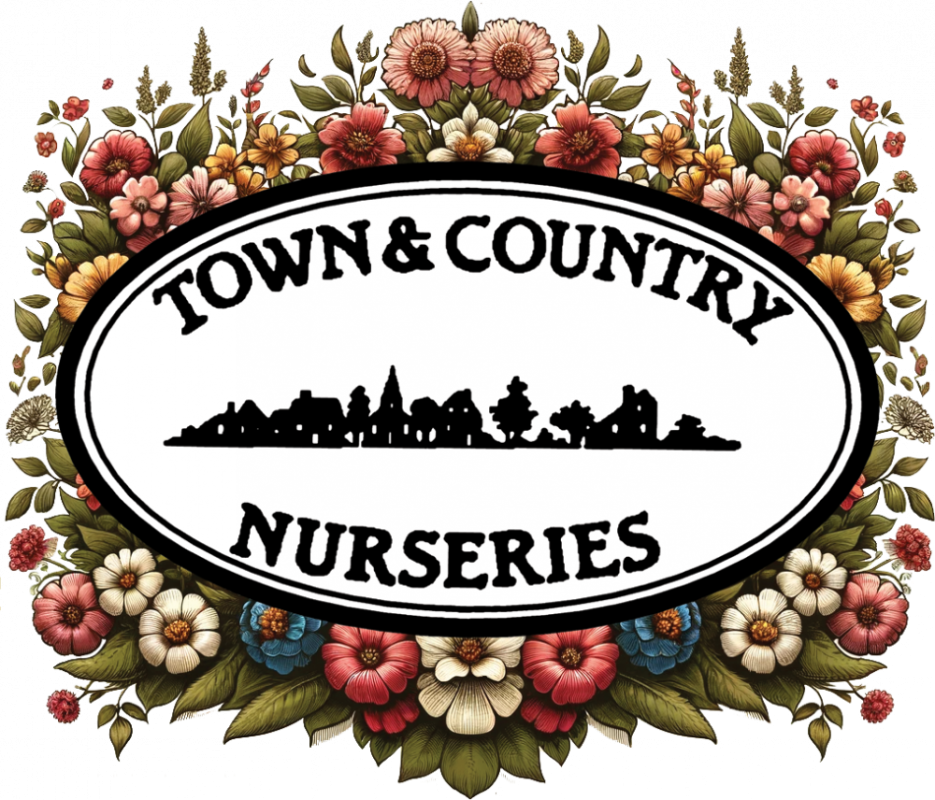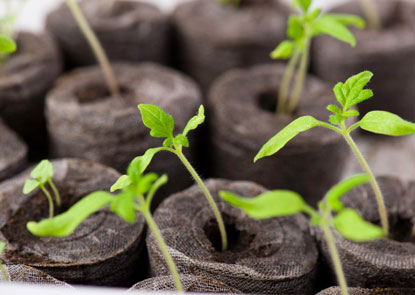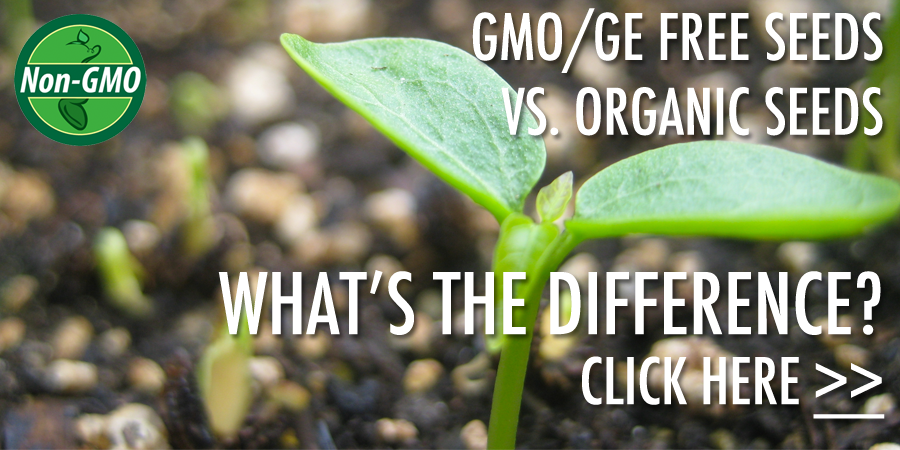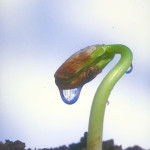 Seeds respond to water, available or unavailable light, and temperature. When starting seeds indoors, the environment is the container and soil you sow them in. Making good choices for soil and containers will help you grow a strong plant, able to live a healthy and productive life.
Seeds respond to water, available or unavailable light, and temperature. When starting seeds indoors, the environment is the container and soil you sow them in. Making good choices for soil and containers will help you grow a strong plant, able to live a healthy and productive life.
How to: SEED BASICS
CONTAINERS
You can find all sizes and shapes of ready-made seed-starting supplies at our garden center. Almost any household container can be re-purposed as a seed-starting container. Containers should be clean. If you choose to re-use or create your own containers, sanitize them with a 1:9 bleach:water solution. One should also consider the 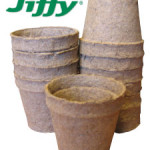 drainage in the container. Any container you choose should have a way for excess water to drain away from your soil. Be sure to consider the seed in choosing a container, for single specimen plants such as squash, tomatoes etc. use a single pot for each seed. For crops which are planted close together a tray may be used for planting. Large seeds (i.e. squash, castor bean, four o’clocks), plants that grow indoors long before transplant (i.e. artichokes, celery, perennial flowers), and quick-growing plants (i.e. tomatoes, lettuce, pumpkin) all need a larger container.
drainage in the container. Any container you choose should have a way for excess water to drain away from your soil. Be sure to consider the seed in choosing a container, for single specimen plants such as squash, tomatoes etc. use a single pot for each seed. For crops which are planted close together a tray may be used for planting. Large seeds (i.e. squash, castor bean, four o’clocks), plants that grow indoors long before transplant (i.e. artichokes, celery, perennial flowers), and quick-growing plants (i.e. tomatoes, lettuce, pumpkin) all need a larger container.
 drainage in the container. Any container you choose should have a way for excess water to drain away from your soil. Be sure to consider the seed in choosing a container, for single specimen plants such as squash, tomatoes etc. use a single pot for each seed. For crops which are planted close together a tray may be used for planting. Large seeds (i.e. squash, castor bean, four o’clocks), plants that grow indoors long before transplant (i.e. artichokes, celery, perennial flowers), and quick-growing plants (i.e. tomatoes, lettuce, pumpkin) all need a larger container.
drainage in the container. Any container you choose should have a way for excess water to drain away from your soil. Be sure to consider the seed in choosing a container, for single specimen plants such as squash, tomatoes etc. use a single pot for each seed. For crops which are planted close together a tray may be used for planting. Large seeds (i.e. squash, castor bean, four o’clocks), plants that grow indoors long before transplant (i.e. artichokes, celery, perennial flowers), and quick-growing plants (i.e. tomatoes, lettuce, pumpkin) all need a larger container.SOIL
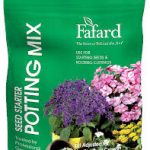 Use a high quality seed-starting mix. We carry a soil mixture that is specifically labeled for seed starting. Do not use soil from outside. It can harbor microorganisms and pathogens that, when taken out of the balance of nature, can harm or kill your seeds. Our high quality potting soil often contains vermiculite or something else to increase water retention. This mixture allows for a moist, not soggy, environment with the right mix of air and water to promote germination.
Use a high quality seed-starting mix. We carry a soil mixture that is specifically labeled for seed starting. Do not use soil from outside. It can harbor microorganisms and pathogens that, when taken out of the balance of nature, can harm or kill your seeds. Our high quality potting soil often contains vermiculite or something else to increase water retention. This mixture allows for a moist, not soggy, environment with the right mix of air and water to promote germination.LIGHT
Light is one of the most important factors to creating a healthy, strong seedling. Some of the smaller seeds require light to begin the growing process so these should be planted close to the soil surface. Some of the larger seeds require the dormant period the deep soil planting provides. Consult the back of your seed package for the seed’s planting depth requirements. Providing the correct amount of sunlight also establishes a strong stem on your seedlings rather
than a long, lanky and therefore weak seedling.
TEMPERATURE
Most seedlings are able to germinate and grow at an average household temperature somewhere around 70° F. There are some plants which require temperatures higher than 70° F to germinate. They include but are not limited to: asparagus, begonia, celosia, impatiens, petunia, tomato, watermelon, cucumber, eggplant, pepper, pumpkin, zucchini, and melons. For these seeds you can apply heat to your soil by placing it near a radiator or other gentle heat source or with a heat mat designed for seeds.
WATER
A seed contains more water than anything else. Providing newly planted seeds with consistent moisture rather than soggy soil is the best way to ensure their good growth. Keeping the soil moist in the early stages of seed germination provides the best environment for the seeds. Pre-soaking the soil before planting is an excellent way to get your seedlings off to a great start. Now that you know what a growing seed requires you can try starting some, or all, of your garden indoors. Starting seeds indoors is not only a good way to start a beautiful garden…it is a great way to jump into an early spring.
